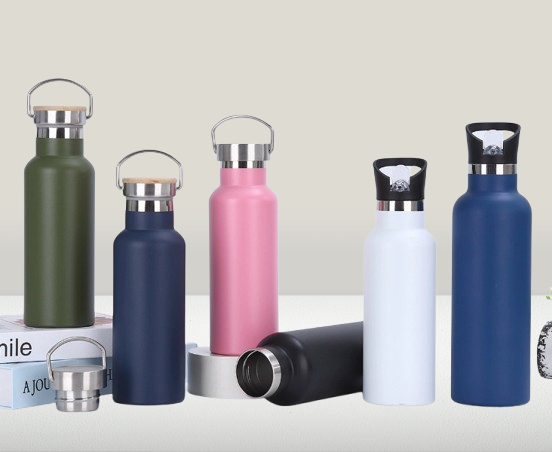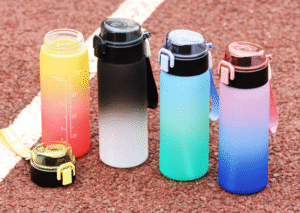Struggling with the high environmental cost of single-use plastics? The waste is overwhelming, and consumers are demanding better options. Choosing reusable drinkware is a powerful, positive change for our planet.
The primary environmental benefit of a reusable water bottle is its ability to significantly reduce plastic waste and carbon emissions. By replacing hundreds of single-use bottles annually, it conserves resources, cuts down on landfill and ocean pollution, and lowers the overall carbon footprint associated with manufacturing and transport.
I've spent my career in the drinkware industry, from developing products to building my own brand, Vivimug. I've seen firsthand how a simple product choice can have a massive impact. It’s easy to say "reusables are better," but professionals like us need to understand the details to make informed decisions for our brands and customers. Talking about sustainability is one thing; building a genuinely sustainable product line is another. Let's explore the real data and facts behind the benefits of reusable water bottles so you can confidently lead the charge.
What is the environmental impact of a water bottle?
Worried about the full lifecycle of a product? A single-use bottle's journey is short but destructive, from resource extraction to landfill. This hidden impact can damage a brand's sustainable image.
The environmental impact of a single-use water bottle includes resource depletion (oil and water), high energy consumption during manufacturing and transport, and massive plastic pollution. Most bottles are not recycled, ending up in landfills or oceans where they take centuries to decompose, harming wildlife.
!
To really understand the impact, we must look at the entire lifecycle. I always advise my partners to think beyond the shelf. The journey starts long before a customer ever sees the bottle. It starts with raw materials. For a single-use plastic bottle, this means extracting crude oil. That process alone is resource-intensive and damaging. Then comes manufacturing. The oil is refined into PET plastic, molded into bottles, and filled with water. This requires huge amounts of energy and, ironically, more water than the bottle will ever hold.
After a single use, the journey ends, but the impact continues. Here's a simple breakdown of the post-use phases:
Post-Use Impact of Single-Use Bottles
| Stage | Description | Environmental Cost |
|---|---|---|
| Transport | Trucks, ships, and trains move the bottles from factories to stores. | Burns fossil fuels, creating significant carbon emissions. |
| Disposal | The bottle is thrown away, often after just one use. | The vast majority are not recycled. |
| Landfill | Bottles are buried in the ground. | They take 450+ years to decompose, leaching chemicals into the soil. |
| Ocean Pollution | Bottles that don't make it to landfill often end up in our oceans. | They break down into microplastics, which harm marine life and enter our food chain. |
This entire cycle is incredibly inefficient and wasteful. When you explain this full picture to customers or internal teams, the value of a reusable alternative becomes crystal clear. It's not just about one bottle; it's about avoiding this entire destructive process hundreds of times a year.
How do reusable containers help the environment?
Are you trying to show how reusables make a real difference? It can be hard to quantify the positive effects. Customers need clear, simple reasons to believe in your sustainable products.
Reusable containers directly reduce the demand for single-use plastics. This conserves the oil and water used in their production, slashes carbon emissions from manufacturing and transport, and dramatically cuts down on the waste that pollutes our landfills and oceans. One person can save over 1,500 bottles annually.
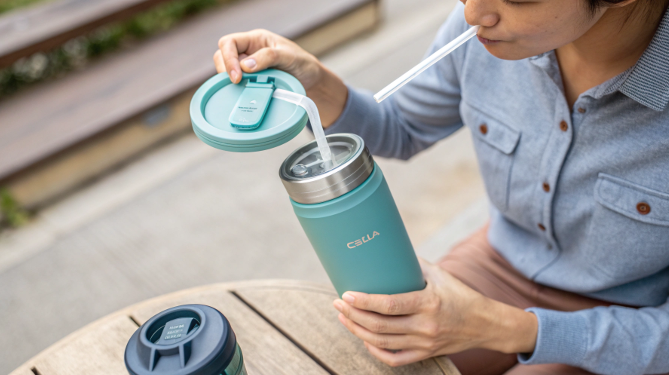
The help from reusable containers comes from one simple action: replacement. Every time someone refills a reusable bottle, they prevent a single-use plastic bottle from being made, transported, and thrown away. I’ve worked with many brands, like lifestyle brand developers, who want to quantify this impact. The numbers are powerful. The average person uses about 13 single-use plastic bottles per month. That's 156 per year. A family of four could be throwing away over 600 bottles annually. A reusable bottle, used daily, has the potential to eliminate thousands of plastic bottles over its lifespan.
This has a direct effect on resource conservation. Let's look at the resources saved by choosing a reusable bottle for just one year.
Resources Saved by One Reusable Bottle (Annual)
| Resource | Amount Saved (Approx.) | Why It Matters |
|---|---|---|
| Crude Oil | 39 Liters / 10 Gallons | Reduces dependency on fossil fuels and the environmental damage from extraction. |
| Water | 468 Liters / 123 Gallons | Conserves fresh water, as it takes 3x the water to produce a plastic bottle than it holds. |
| CO2 Emissions | 12.5 kg / 27.5 lbs | Equivalent to driving a car for 50 km / 31 miles. Lowers your carbon footprint. |
When I started Vivimug, my focus was on quality and design. But I quickly realized the story of sustainability was just as important. These numbers show that a reusable bottle isn't just a product. It is a tool for conservation. It actively reduces pollution and saves precious resources every single day. This is the story that connects with consumers and builds brand loyalty.
What are the benefits of recycling water bottles?
You hear that recycling solves the plastic problem. But is it a complete solution? Relying on recycling alone can give a false sense of security and mask the system's deep inefficiencies.
Recycling plastic bottles helps by turning waste into new products, which conserves raw materials and uses less energy than creating virgin plastic. It also reduces the amount of waste sent to landfills. However, it is not a perfect solution due to low recycling rates and material degradation.
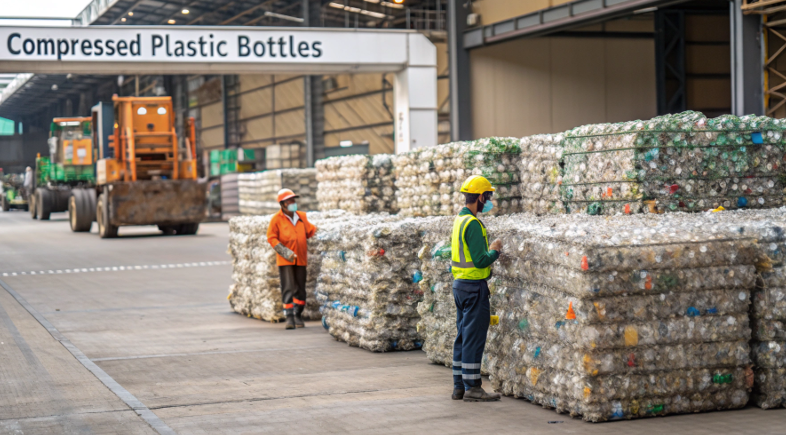
Recycling is certainly better than sending plastic straight to a landfill. I always encourage proper disposal of any product. The process, known as "downcycling," has real benefits. It takes an old PET bottle and turns it into things like carpet fiber, clothing, or another lower-grade plastic item. Creating a product from recycled PET uses about 75% less energy than making it from raw materials. This is a significant energy saving and reduces our need for more oil extraction. So yes, recycling has its place.
However, we cannot rely on it to solve the plastic crisis. The system has major flaws.
The Limits of Recycling Single-Use Plastics
| Limitation | Description | Implication for Brands |
|---|---|---|
| Low Recycling Rates | Globally, less than 10% of all plastic ever produced has been recycled. The rest is in landfills or the environment. | Brands cannot claim a product is "eco-friendly" just because it's "recyclable." The reality is different. |
| Downcycling, Not Recycling | Plastic bottles are not typically made back into new bottles. They become lower-quality materials that cannot be recycled again. | The material's life is very short. It's a one-way street to the landfill, just a slightly longer one. |
| Contamination | If bottles are not cleaned properly, or if they are mixed with other types of plastic, entire batches can be rejected by recycling centers. | The effectiveness of consumer recycling efforts is often compromised by complex rules and lack of education. |
Because of these limitations, the "Reduce, Reuse, Recycle" mantra is ordered by importance. Reducing consumption and reusing what we have are far more effective strategies than recycling. This is a key insight for product developers. Your work in creating durable, desirable reusable products addresses the problem at its source.
What is the most environmentally friendly reusable water bottle?
Choosing the right material for a product line is tough. You're balancing cost, aesthetics, and sustainability. Every material has pros and cons, making it hard to declare one clear winner for the environment.
The most environmentally friendly reusable bottle is the one you use the longest. While stainless steel and glass have strong eco-credentials due to their durability and recyclability, the best choice depends on balancing the manufacturing impact with the product's lifespan and end-of-life options.
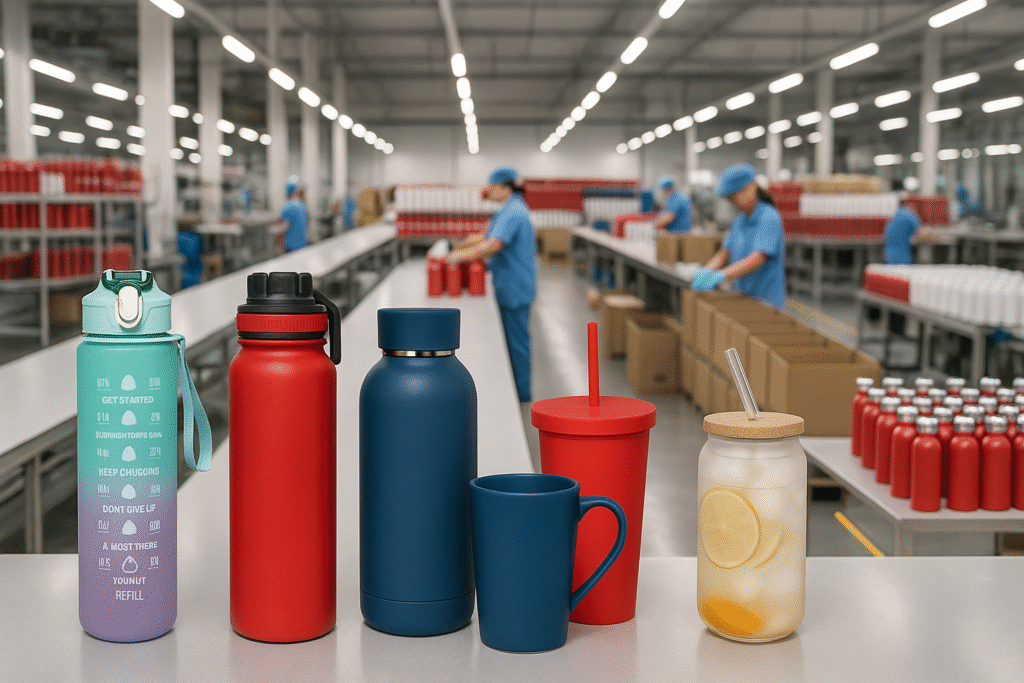
In all my years helping clients develop drinkware lines, this question comes up constantly. The answer isn't simple. The "best" material isn't just about what it's made of. It's about its entire life story, from creation to disposal. Each popular material has a different profile. A product developer like Emily needs to weigh these factors carefully.
Let’s break them down.
Comparing Eco-Friendly Reusable Bottle Materials
| Material | Manufacturing Impact | Durability & Lifespan | End-of-Life | Best For |
|---|---|---|---|---|
| Stainless Steel | High. Requires mining iron ore and significant energy to produce. | Very High. Extremely durable, resistant to drops and corrosion. Can last for decades. | Infinitely Recyclable. Can be melted down and reformed into high-quality steel without degradation. | A premium, long-lasting option where durability is the top priority. |
| Glass | Moderate. Made from sand, a plentiful resource. Requires high heat for manufacturing. | Moderate. Can break if dropped. Borosilicate glass is more durable. Lifespan depends on user care. | Infinitely Recyclable. Easily melted down and remade into new glass products. | Purity of taste and a clean aesthetic on a product that will be handled with some care. |
| BPA-Free Plastic (e.g., Tritan) | Low. Lighter weight and requires less energy to produce and transport than steel or glass. | Good. Resists shattering and is very lightweight. Can become scratched or clouded over time. | Difficult to Recycle. Most curbside programs do not accept these plastics, often ending up in landfill. | Lightweight, budget-friendly options for sports or on-the-go use. |
My experience tells me this: focus on longevity. A stainless steel bottle has a higher initial carbon footprint from manufacturing. But if it replaces 5,000 plastic bottles over a decade, its overall impact is tiny. A glass bottle is clean and endlessly recyclable, but if it breaks in the first month, it's wasteful. The most sustainable choice is the one that fits a user's lifestyle and encourages them to use it again and again for years.
Conclusion
Ultimately, the environmental benefit of reusable bottles comes from one thing: long-term use. By choosing durable, well-designed reusables, we directly reduce waste, conserve resources, and build a more sustainable future.
